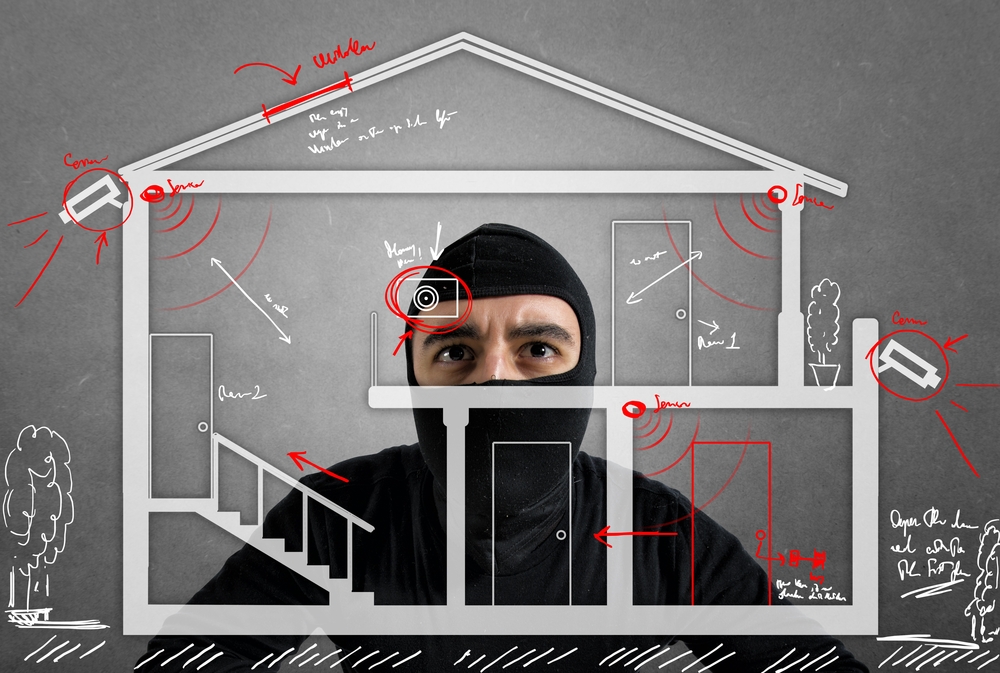Moving is always a challenge to anyone; but I think it has to be even more for those of us who are preppers.
Not only do we have to move all the normal furniture and household goods, we’ve got to move our survival gear and prepping supplies. For some, that can almost seem like a bigger job.
But the real problem isn’t actually moving the stuff; it’s getting set up in the new place. It takes a lot more work to plant a new garden, set up a new rainwater collection system, or install your solar panels, than it does to set up the furniture and unpack the boxes. For a prepper, the job of moving in isn’t completed until they have finished setting up to survive, should a disaster strike at their new home.
I was just recently forced to move, so I can relate intimately to this experience. I’m still getting set up, which is complicated by the fact that the new place isn’t as big as my old one was. But I’ve learned a lot of useful things about what moving means to a prepper. So allow me to share a few of them with you.
Choose Your New Home Carefully
The process has to start with selecting your home. As with everyone else, this includes picking the area you want to live in and finding a home with enough space for your family and your possessions. Even so, we actually have more need for space than others, as we have to have someplace to store our stockpile.
But there are other things you should consider as well. Does the home lend itself to alternative heating? Is the yard large enough to allow you to grow the food your family needs? Is at least one surface of the roof pointing in a good direction for solar panels? Are there gutters in place, for rainwater collection? Is the home built in such a way as to make it easily defensible? These and other questions should be part of your selection process.
Scout the Area for Resources
Resources are a major consideration, especially the resources you’ll need in a long-term survival scenario. I’m specifically thinking of water and firewood here; but don’t limit yourself to thinking just of those. If there is farmland around, you’ll want to locate it and find out what the farmers are growing. In a long-term crisis, that could be a good source of food.
Speaking of food, look to see how far it is to go hunting or fishing. If you can buy a home which is on the edge of a community, you will not only be closer to any nearby farms, but also to places where you can harvest meat from nature. That could be important.
You want a general idea of where all these resources are, before buying or renting the house. But don’t settle for that general idea. Once you get moved in, take some time to scout the area, learning where anything and everything useful is located. One good way to do this, without wasting a lot of time, is to take a different route, every time you leave home. Then, when you get back, brief other family members on what you found.
Plan Before You Move
It’s always a good idea to have a good plan in place, before doing anything. Considering how major a project to move can be, this is doubly so. Taking the time out to plan your move, including the order in which you’ll set up in your new home isn’t lost time, it will actually save you time when you get there.
One of the major reasons you want to plan is so that you don’t do anything that creates extra work for yourself. For example, if you know where your furniture is going to be placed in the various rooms of the house, you can designate those areas as “no box zones,” providing your moving help with identified areas where they can stack boxes. Tape signs on the walls to identify these areas, in order to make the job easier.
Of course, this planning has to include getting your preps in order. Chances are, you’re not going to be able to do everything immediately upon moving. So what are you going to do for temporary survival resources, until you can get your permanent solution in place?
One example of this could be putting in a well. Since it takes time and money to put in a well, you won’t have that the day you arrive. So what can you use for an emergency water source, should something happen two weeks after moving, before you can put the well in? If you have an above-ground swimming pool, that might be the answer, acting as a large, stealthy water tank for your family.
Pack for the Destination
One of the biggest mistakes people make when packing is that they pack for the way things are in their old home, rather than for the way they need to go in the new home. But if you can pack things based upon their intended destination, you will save yourself work on the other end.
Take, for example books. Let’s say you keep your book collection in the living room in your old home, but the new home has a family room, where you are going to place your library. Then you want those boxes to be marked “family room” not “living room.” You also want to make sure that knick-knacks and other things that still need to go to the living room don’t get packed in those boxes.
Take the Opportunity to Move Extras In
One of our big concerns as preppers is OPSEC. As part of that, I and other writers have said to be careful about bringing large quantities of food or other supplies home, all at the same time. That’s just the kind of thing which can arouse neighbors’ suspicions and blow our cover.
Moving gives you great cover for moving anything short of a howitzer into your home. You’re already bringing in stacks of boxes and things are a mess. If you can afford it, nobody is going to notice an extra pickup truck full of food, as long as you don’t advertise it that way. Even if it is cases of food, with the company labels on it, they’ll just assume that you are using those boxes to pack other things in, allowing you to slip those extra supplies under their noses, without them noticing.
Prep the New Home Before Moving
There will undoubtedly be things you need to do to your new home, even if it is nothing more serious than painting. No matter what it is, it can probably be done easier, before things are moved in, then it can be after your home is full. Adding a couple of extra days into your moving schedule, to take care of these things before the actual moving day, can go a long way towards saving you time.
The same applies to prepping projects that require modifications to your home. The problem here, is that many of these projects will require multiple days. So you have to figure out which is going to be a better use of your time. You should only choose to do those projects before you move, which need an empty house and will save you time down the road.
Prioritize Your Projects Carefully
Speaking of projects, be sure to prioritize your projects carefully. It is easy to get distracted by what seems to need to be done now, just because that’s the thing you see. But seeing it or being bothered by it doesn’t make it a priority. What makes it a priority is how well it can help you survive, if a disaster strikes.
This means bouncing your project list off of your survival priority list, so that you can come up with a realistic priority list for your projects. Since water is a higher survival priority than food, the well or rainwater collection system should be put in, before the garden is. But, if you don’t have the money to drill the well, you might need to put that project off for a while, planting the garden first.
Click here to get your guide to a layered survival defense!
Another thing that can affect how high a priority something is on your project list is timing. If you buy a home in the summertime, far in the northern part of the country, you might have to plant a garden immediately, even before unpacking, just to have a chance of getting a harvest before the first freeze.
Where this can get really tricky is in balancing your survival projects with your regular home projects. Maybe that rainwater collection system is your highest priority project on your survival project list; but that doesn’t mean that it’s automatically a higher priority than putting in an island in the kitchen, so that you’ve got enough counter space. Both are needed; one for today and the other for a day we hope will never come.
Establish a Means to Heat
When you start working on projects, the very first project needs to be a means of heating your home, should the power go out. That is, unless you live in southern Florida, where you don’t need to worry about heat. This should have been part of your planning, when you were shopping for the house; deciding how you are going to heat your new home in the case of an emergency.
Don’t forget to stockpile enough fuel, as part of this project. The best wood-burning stove in the world is nothing more than a big paperweight, without adequate fuel.
Develop Sources for Your Most Critical Resources
As we all know, our stockpile will only last so long. That’s why access to additional resources is so important. As much as possible, you want those to be on your property, but that may not always be practical. If you don’t have a home bordering a river, than you have to get your water by another means. But even if you put a well in or build a rainwater capture system, you should have a means of getting water from that river, if it’s within walking distance.
Don’t just assume you can do what you had planned on doing at your previous home. In the move I just made, I found that the nearest canal was much farther away than what I had before. Rather than having to move water two blocks, I was going to have to move it two miles. In that case, using a hand truck to move it wasn’t as practical, I switched over to modifying a trailer that I could tow behind a bicycle, so that gathering water wouldn’t take as much time.
Be Sure You Can Defend Yourself
Home defense tends to be an afterthought for most of us. There’s a general feeling that if we have our guns and our ammo, we’re set. But I’d like to challenge that idea. Yes, having guns and ammo does make it possible to defend your home, but it’s not enough. You want your home hardened against attack, so that the hungry mob can’t get inside.
Hardening your home basically means making it harder to break into. This includes fortifying the doors, so that they can’t be kicked open. It also includes providing protection for the ground-floor windows. These are the two most common invasion points that the bad guys use, so hardening them helps ensure that your home is safe from any attack.
This also makes your guns and ammo more effective, in case you can fight from a position of concealment, even if it is not one of cover. While you have to be careful about the legalities of it, fighting the bad guys from inside your home, while they are still outdoors, is much better for you, than having to defeat them after they’re already inside.
Seek Out Like-Minded Neighbors
Finally, once your home is ready to serve as your survival retreat, it’s time to start seeking out other preppers and survivalists in your area. The best would be to find other preppers on the same block, who you could team up with in a time of crisis. But even if you can’t find them that close, people with a prepper mindset who live a few blocks away can still be a valuable resource.
Don’t automatically dismiss neighbors who don’t have any interest in being prepared. They’re not likely to move away. Rather, try to determine how much of a help they might be in a time of crisis. Stocking some extra rice and beans really isn’t a problem and you might be able to buy their cooperation with that. If so, they could become a valuable ally.
This is especially true of neighbors who have skills or resources that can help you survive. Before moving, I had a neighbor who owned a small ranch, outside of town, with about 50 head of cattle. He was not at all interested in prepping, but I was interested in him and his cattle. I had figured him into my plans, in the case that anything serious happened. Providing him with some rice and beans (and a few other things) in exchange for access to his cattle seemed like a cheap price to me.
I even built a smokehouse for that possibility.
























































































Thanks for another great column!
Sometimes it’s very difficult to keep a spouse on board with prepping. I had a great setup at my last place until our marriage went south. We are still on speaking terms but we live 2 hr apart and she’s in a country house while I’m in a city apartment. I don’t like being above the 3rd floor but it’s more defensible than her bungalow on ground level. I don’t have the workshops I had, but st least I’m in control and I have a like minded individual living with me.